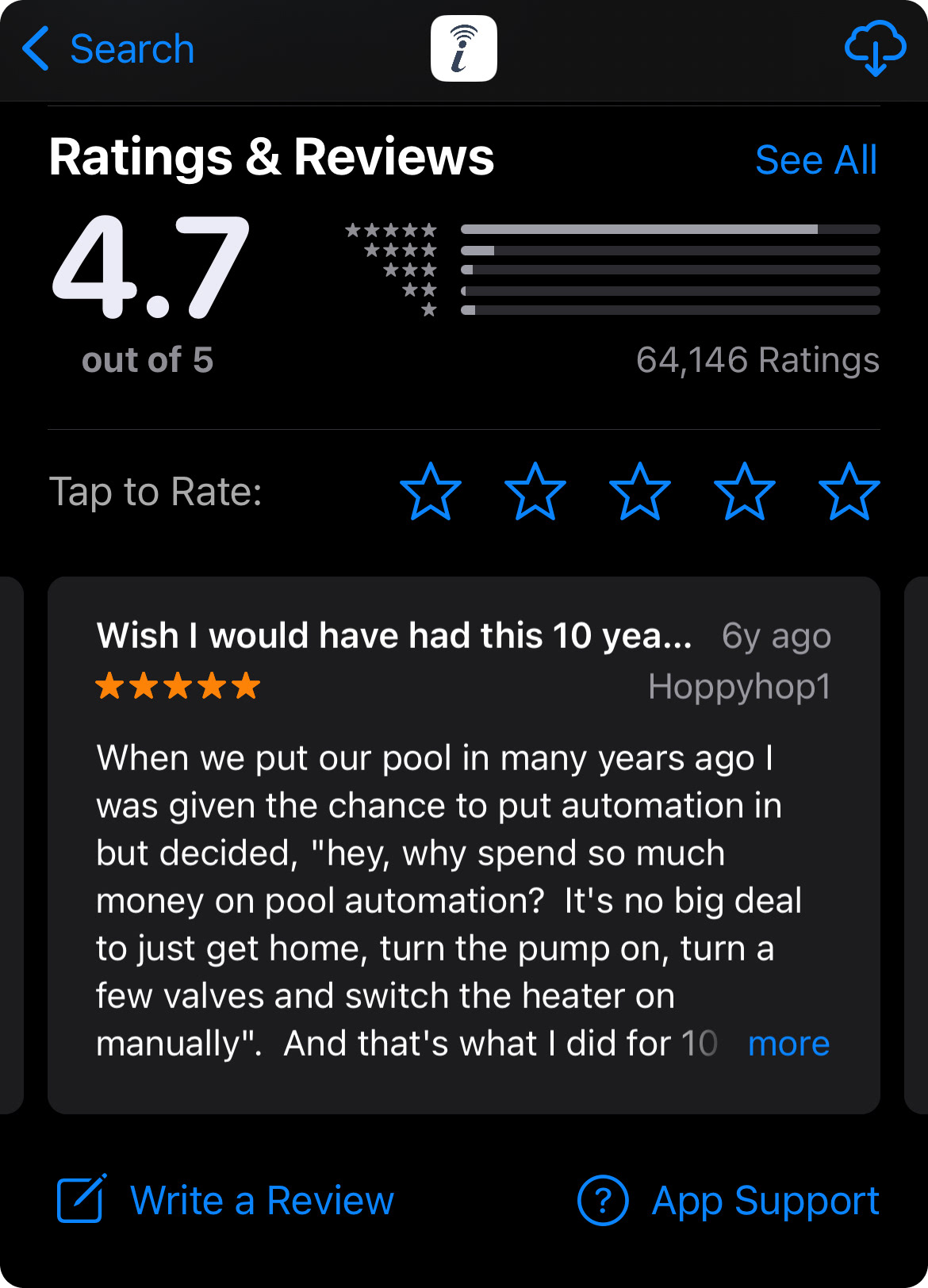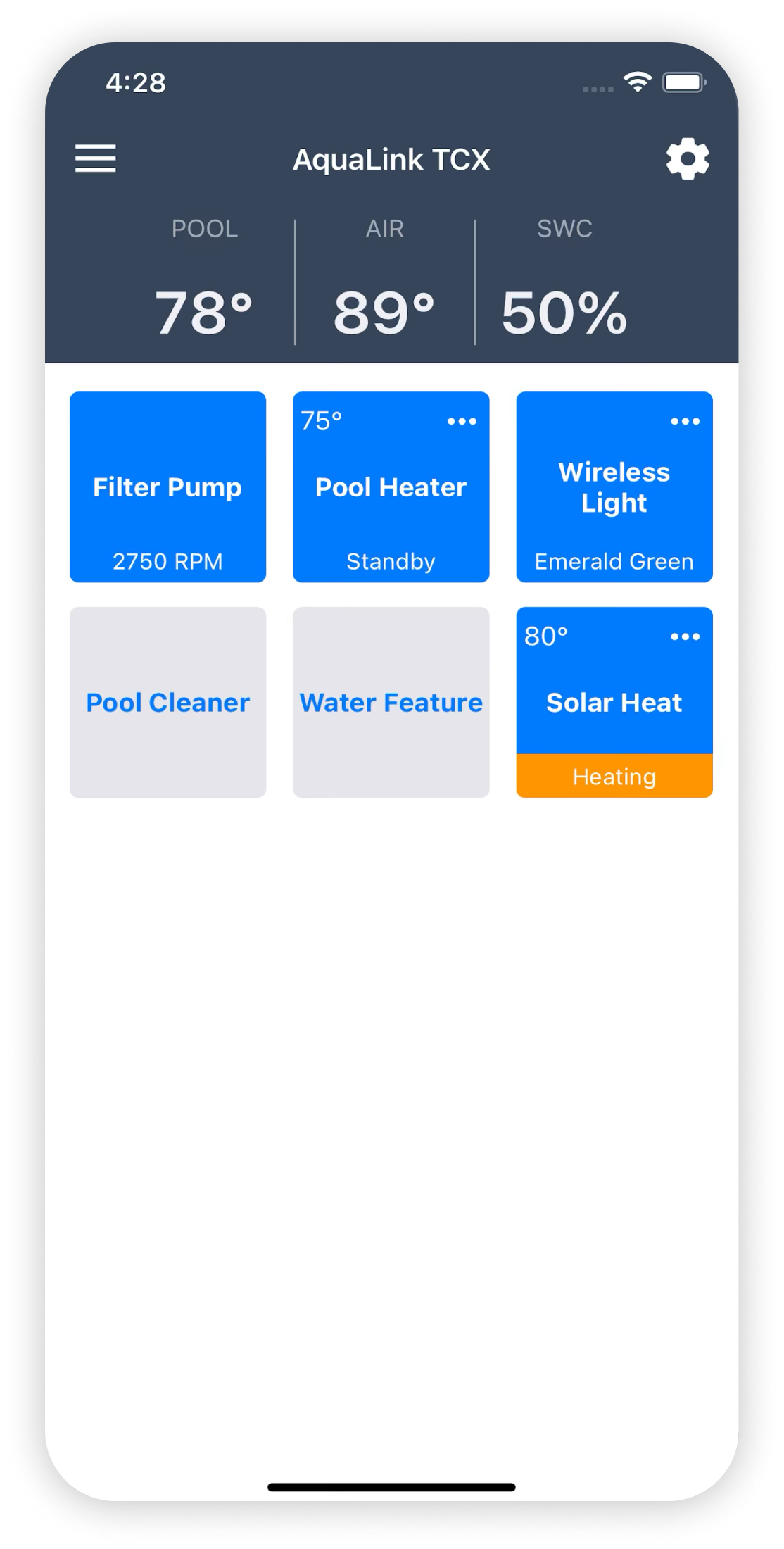Screens from the consumer-centric views of the iAqualink app. Consumers get to enjoy a simple, streamlined experience on their phone that places the complex set up and maintenance functions utilized by pool professionals out-of-sight, out-of-mind.
The Problem
In 2017, Zodiac Pool Systems made me the first interaction design member of its fledgling app design team. Our mission? To create the "Infinity" IoT pool automation system. This behemoth of a system aimed to do something that sounded simple on the surface, but extremely complex to those in the know: Help pool pros use a new "pro" app and Jandy IoT pool equipment to setup extremely customized and intricate pools. Simultaneously it would need to make the experience for homeowners simple enough to grasp in a few minutes, and premium enough to warrant the high price.
To make matters more difficult, the "Infinity" automation system would need to compete with legacy, web-enabled systems offered by Jandy themselves, and top competitors Hayward, and Pentair.
These screens show the general state of pool-control prior to my work at Zodiac Pool Systems. Web interfaces available to monitor and control pools from desktop computers were visually dated, and a complete mystery to operate for all but the most dedicated. Meanwhile, expensive controllers like the one shown above costs in the hundreds of dollars and felt dated.
The Process
To tackle this challenge, I collaborated with product managers, executive stakeholders, hardware and software engineers, as well as the sales team. Together, we implemented recurring "sprint" systems that facilitated a gradual learning process, allowing us to design, test, and finalize user-friendly approaches for pool equipment setup and control within the iAqualink app. Over the course of each two week sprint the Director of Product would highlight functionality a user should be able to accomplish with their "Infinity" automation system (for example, setting up a pool pump). From there, I'd undertake research and interaction design duties to quickly hypothesize and test an effective way to implement the functionality. To enable this iterative process I create a Kanban board with the distinct stages of the learn, build, measure process we needed to hit including:
• Heuristic analysis of past approaches
• Competitor analysis of modern approaches
• User Interviews
• Brainstorming and Wireframing
• Prototyping
• Testing with users (I arranged for this to happen with alternating user groups of pool pros and consumers)
• Sharing results with the product and engineering teams in "Design Demo"
• Iteration
• Documenting of the current best approach in Confluence
• Hand-off to the development team.
This simple process worked well and made sure that users and engineers had a constant voice in the discussion. Within a few months we'd discovered two things that we had to delicately frame to the larger business:
1. Existing solutions allowed for extremely intricate pool setups, and we would have to offer near-parity to make a compelling flagship automation offering.
2. Developing such an intricate application in concert with the required hardware was likely to take years.
Fortunately the agility of the process and the relationships we forged with engineering through the iterative process we implemented allowed to us to quickly pivot to a more viable approach.
Together with engineering we worked to identify simpler hardware projects that would benefit from IoT control on their own.. Among these projects: a variable speed pool pump, a smart heating system, color-changing pool lights, and a robotic cleaner. To conserve our limited design and development resources we decided to use the simpler, self-contained projects as opportunities to deliver MVPs. These MVPs would help us learn about what pool pros and consumers expected, and along the way deliver each "piece" of the pool pad - meaning that consumers might be able to build their own complex pools even without the need for the "Infinity" automation system, by linking all the difference pieces together as needed.
Upcoming products that weren't originally our our radar like pool cleaning robots and variable-speed pool pumps provided great opportunities to learn and deliver value along the way.
These screens from actual release show the near-term results from breaking down the initial ask for a flagship automation system into smaller release opportunities. To the left we see a VSP pump control screen, on the right heat control. Over the course of research, design and testing we discovered that users found full page interactions easier to process for adjustments to think like pool temperature or pump speeds. We also found that we could use similar control schemes to keep things consistent and save engineers time in getting to value.
The Impact
Today the iAqualink app we designed and developed lays claim to the highest rating in the App Store (4.7/5.0 Stars at time of writing), and the robotic pool cleaner we were able to support with our iterative approach is the best selling robotic pool cleaner in its class.
Thanks to the quick speed the design process we put in place we were also able to release a totally new automation system "TCX" for smaller pool systems, making use of the same patterns we identified and implemented for pools and heaters. Today, four years later, the team continues to work towards the dream of building up to a "do anything" automation system.
Additionally, Zodiac's positioning as a leader in IoT pool software helped it close a merger with Fluidra in late 2018, and its valuation has since more than doubled.

The iAqualink app supports the highest selling pool-control robot thanks to our iterative design and development process.

iAqualink maintains the best-in-class pool IoT ratings in the App Store while supporting a variety of smart pool products.
